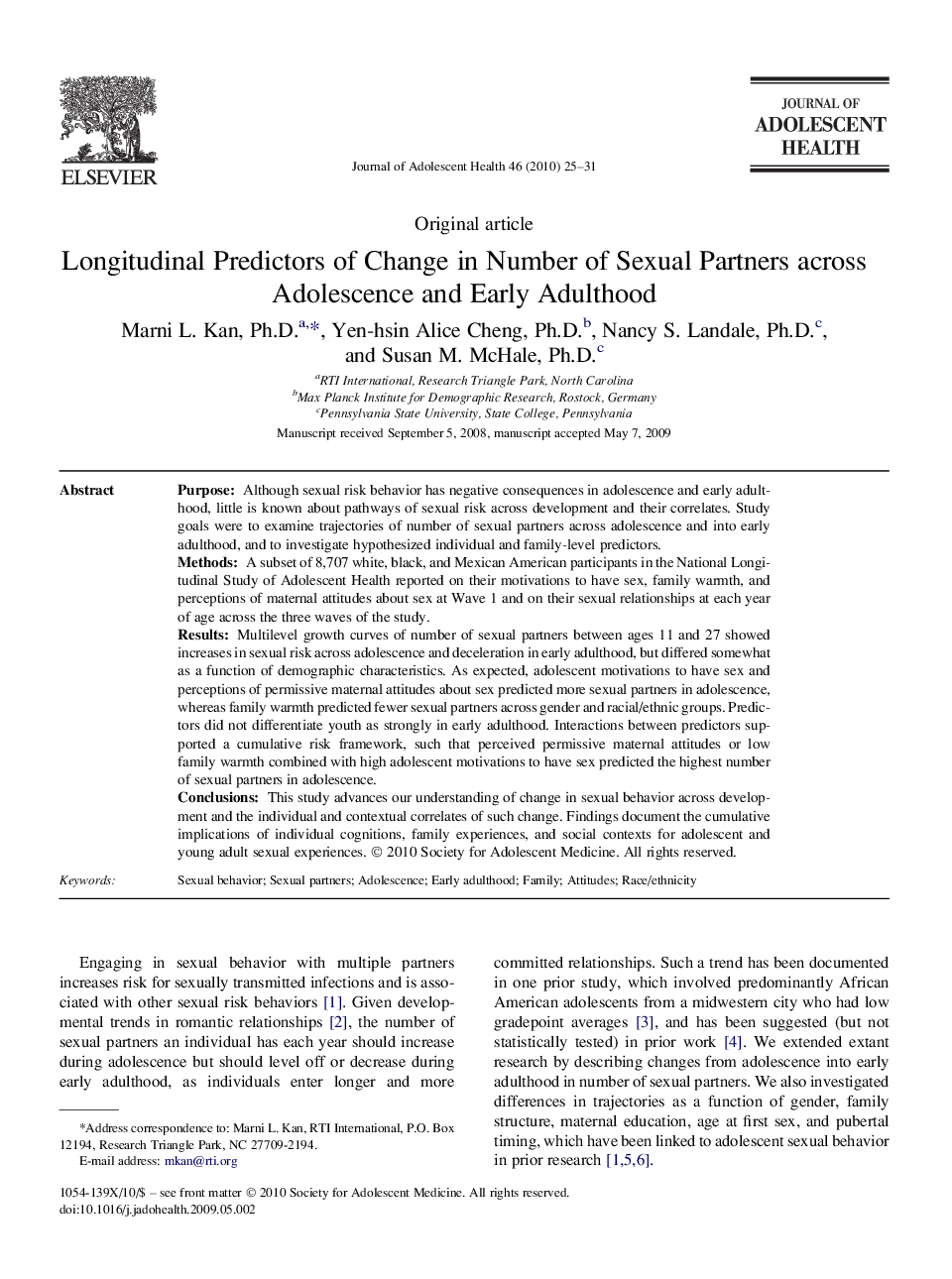| Article ID | Journal | Published Year | Pages | File Type |
|---|---|---|---|---|
| 1080093 | Journal of Adolescent Health | 2010 | 7 Pages |
PurposeAlthough sexual risk behavior has negative consequences in adolescence and early adulthood, little is known about pathways of sexual risk across development and their correlates. Study goals were to examine trajectories of number of sexual partners across adolescence and into early adulthood, and to investigate hypothesized individual and family-level predictors.MethodsA subset of 8,707 white, black, and Mexican American participants in the National Longitudinal Study of Adolescent Health reported on their motivations to have sex, family warmth, and perceptions of maternal attitudes about sex at Wave 1 and on their sexual relationships at each year of age across the three waves of the study.ResultsMultilevel growth curves of number of sexual partners between ages 11 and 27 showed increases in sexual risk across adolescence and deceleration in early adulthood, but differed somewhat as a function of demographic characteristics. As expected, adolescent motivations to have sex and perceptions of permissive maternal attitudes about sex predicted more sexual partners in adolescence, whereas family warmth predicted fewer sexual partners across gender and racial/ethnic groups. Predictors did not differentiate youth as strongly in early adulthood. Interactions between predictors supported a cumulative risk framework, such that perceived permissive maternal attitudes or low family warmth combined with high adolescent motivations to have sex predicted the highest number of sexual partners in adolescence.ConclusionsThis study advances our understanding of change in sexual behavior across development and the individual and contextual correlates of such change. Findings document the cumulative implications of individual cognitions, family experiences, and social contexts for adolescent and young adult sexual experiences.
